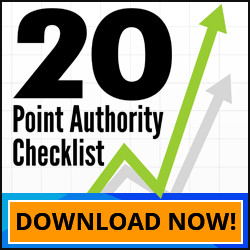
WordPress
Is WordPress Good For Content Sites?
WordPress is a fantastic blogging platform that is supported by literally tens of thousands of plugins that are developed by a passionate community. When putting ‘Content Sites’ into the same sentence as ‘WordPress’, one thing needs to be addressed first. Is it the correct platform for your site? I mean, WP is a fantastic blogging platform, so one could only assume that creating a content based site on this platform may not be the best idea, however, with a few basic guidelines, it can actually be a great CMS for a content based site. Take the very website that you are reading right now for example. Let’s cover a few basics…
3 Level Page Structure
Those of us who have been in the webmaster game for some time know and understand that having a three level page structure is not only easier for the visitor, but better for the search engines. There are fewer chances of the search engine spiders getting lost in your site, and visitors can easily use the navigation that you provide to find their way around without getting lost in an extremely deep page structure.
When using WordPress as a CMS for a content based site, I recommend using pages for your first tier of pages, then use child pages for your third tier of pages. Not only do the URL’s to these pages look nicer, it just looks more like a content based site rather than a blog disguised as a content based site. Let’s not forget that later down the track if you choose to add some persona to your website, you can easily add a blog using posts and categories.
Page Titles, No Follow, and Search Engine Crawlers
For pure rock solid ‘on page SEO’ on your WordPress content site, keywords in your page titles are key. Of course, for the sake of Navigation, you don’t want to have huge titles like you may do if using WordPress for a blog, but this can actually work in your favour. Short and straight to the point titles do tend to attract people rather than a sales pitch for your content and can work better as a ‘call to action’.
Of course, if your titles are not able to be keyword optimized all that well, there is always the ‘no follow’ attribute, (which I personally use like it is going out of fashion, and I will explain how to make your site crawler friendly shortly) however implementation of this can be tricky, as this can vary from theme to theme. In all cases, the WordPress Codex is always going to be a great resource for you to monitor, and search for instructions if this need arises. I would love to post instructions on this, however if I were to do this, it would end up in the form of a 128 page eBook as there are so many variations of this method between the different WordPress versions and themes that are circulating today, and equally as many plugins.
Adding Keyword Links In The Footer
After adding the ‘no follow’ attribute to your page links in the main navigation, you are going to need to consider exactly how these pages are going to be indexed. This involves being a bit crafty, not only in creating good keyword based anchor text for page links in your footer or sidebar, but in developing a great internal link structure between pages. Let’s put it this way, if you use a keyword on a page that is in direct relation to a keyword that you are focusing on another page, you would be crazy not to internally link that keyword to that related page. This increases your page views, and also builds your credibility as a reliable source of lots of information.
At the end of the day, there is a lot of talk about WordPress being used as the basis of a content based site. Some people speak out against it, I have personally had some great results with it. There are a few golden rules, however, as long as you use your common sense, creating a content based site using WordPress is a simple task that is further simplified in the long run by the easy to use CMS that WP is.
Recent Melbourne SEO Services Blog Posts:


